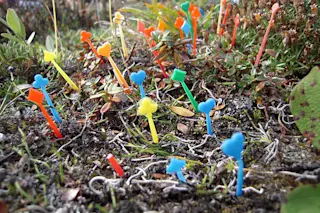A dozen years ago, Daniel Doak began crawling around the Alaskan tundra carrying a container of colorful party toothpicks. He was there on the chilly North Slope at the top of the continent to study moss campion, a low, flat plant that explodes with pink flowers in early summer.
Moss campion seedlings are “the size of the head of a pushpin,” Doak says, and 20 years can pass before they grow much bigger. Nonetheless, Doak, an ecologist at the University of Colorado, dutifully identified, mapped and measured the plants, using the toothpicks to mark the location of the smallest ones.
Every summer he returns, and after all those years of strained eyes and bruised knees, he now has data on 2,500 plants in the Arctic and thousands more at sites across the globe, from the Rocky Mountains to the Pyrenees. (Moss campion grows across a wide swath of the world’s ...















